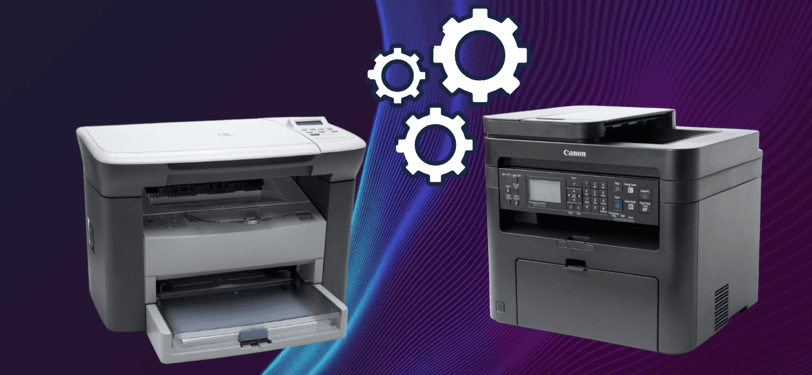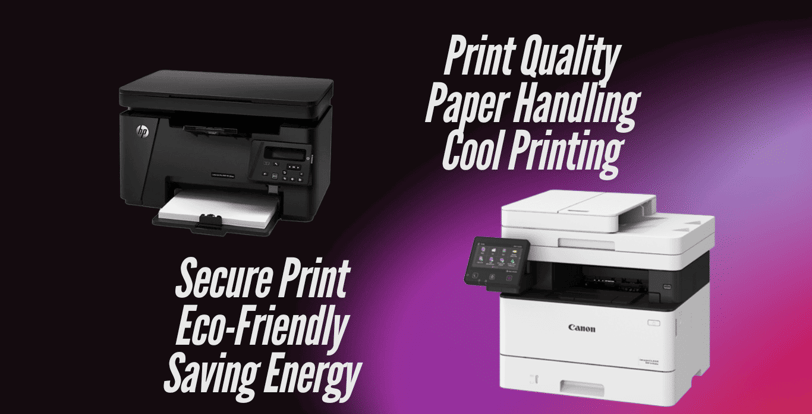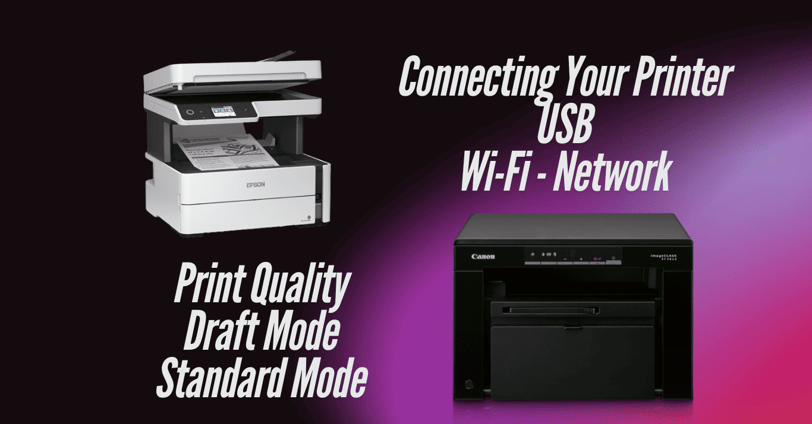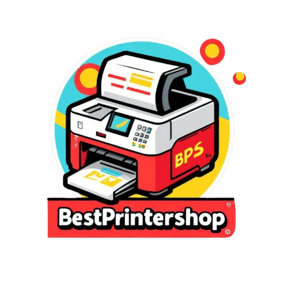Laser Printer Settings: Optimize Performance & Efficiency
Laser printer settings for superior print quality, cost efficiency, and security. Advanced features, eco-friendly options, and troubleshooting.
Praveen Kumar - Canon Printer Specialist
1/7/20259 min read


Introduction to Laser Printer Settings
Many laser printer users struggle with common issues like unclear printouts, paper jams, and high printing costs due to unoptimized printer settings. This lack of proper configuration can lead to wasted toner, subpar print quality, and time spent troubleshooting preventable problems, resulting in frustration, lost time, and unnecessary expenses. However, by understanding and customizing laser printer settings, users can significantly improve their printing experience, making their printers work more efficiently and effectively.
1. Getting Started with Your Printer
Setting up your printer correctly from the start is super important. Skipping steps can cause problems later.
Installing the Right Software (Drivers): Think of drivers as the translator between your computer and printer. Without the right one, they can't understand each other. Go to the printer maker's website and download the latest drivers specifically for your printer model and computer's operating system (like Windows or macOS). Don't use the generic drivers that might come with your computer – they often miss important features.
Connecting Your Printer: You have a few choices for connecting your printer:
USB: This is the easiest. Just plug the cable in, and your computer should guide you through the rest.
Wi-Fi: Great if you want to print from multiple devices without cables. Use the printer's screen to connect it to your Wi-Fi network.
Ethernet: This is a wired connection that's best for offices where lots of people need a reliable connection to the printer.
A Quick Check-Up (Calibration): Once it's connected, do a test print to make sure everything is aligned and looks good. Your printer's manual will have instructions on adjusting things like paper type and how dark the print is.
2. Getting Great Print Quality
Whether you're printing important documents or family photos, print quality matters. Here's how to make your prints look their best:
Choosing the Right Resolution: You usually have three options:
Draft Mode: This is for quick, internal prints and uses the least amount of toner.
Standard Mode: A good balance of quality and toner use for everyday printing.
High-Quality Mode: This is for when you need the best possible quality, like for presentations or photos, but it uses more toner.
Adjusting How Dark the Print Is (Toner Density): This controls how much toner is used. Use a lighter setting for documents with mostly text and a darker setting for images or bold designs.
Color or Black and White (Monochrome): If you have a color printer, you can choose to print in color or just black and white. Black and white is cheaper for text documents.
3. Paper Handling Tips
Using the wrong paper settings can cause jams and poor print quality. Let's avoid that!
Choosing the Right Paper: Most printers handle standard paper sizes like A4 and Letter, but if you're using special paper like glossy photo paper or card stock, make sure to select the correct size and type in your print settings. This prevents misfeeds.
Using Different Paper Trays: Many printers have multiple trays. You can use one tray for regular paper and another for special paper.
Printing on Both Sides (Duplex Printing): This saves paper and looks professional. You can enable it in your print settings. Some printers do this automatically, while others require you to manually flip the pages over.
4. Taking Care of Your Toner
Toner is what makes your laser printer work, so managing it wisely is key to saving money and avoiding headaches.
Saving Toner with Eco Mode: Most printers have an "Eco Mode" that uses less toner. Turn this on for drafts or when you don't need the highest quality print. You can combine this with a lower resolution setting for even more savings.
Keeping an Eye on Toner Levels: It's a good idea to check your toner levels regularly so you don't run out in the middle of a print job. Your printer's screen or its companion app (if it has one) will usually give you alerts. Try to order a replacement before you run completely out.
Replacing Your Toner Cartridge: When it's time to change the toner, follow the instructions in your printer's manual to avoid making a mess or damaging anything. Using toner cartridges recommended by the printer's manufacturer will give you the best results. Basically, good toner management means fewer interruptions and lower printing costs.
5. Getting Connected
Modern laser printers have some pretty cool ways to connect. Here's how to make the most of them:
Setting Up Wi-Fi: Printing wirelessly is super convenient. Use the screen on your printer to search for your Wi-Fi network. If your router supports it, using WPS (Wi-Fi Protected Setup) is the fastest way to connect.
Setting a Fixed Address (Static IP): If you're using your printer in an office, giving it a fixed IP address will make the connection more reliable. You can access your printer's network settings through its admin panel (check your manual for how to do this).
Printing From Your Phone or the Cloud: You can even print from your phone or from cloud services like Google Drive. To do this, you might need to install an app (like Google Cloud Print or an app from your printer's manufacturer) and enable cloud printing in your printer's settings.


6. Cool Printing Tricks
Modern laser printers have some neat features that can save you time, make you more productive, and give your documents a professional touch.
Adding Watermarks and Overlays: You can add a watermark (like "Confidential" or "Draft") or an overlay (like your company logo) to your documents for branding or security. You can usually do this through the printer's software. This is great for businesses that want all their documents to have a consistent look.
Printing Multiple Pages on One Sheet: This is a great way to save paper. You can choose to print two, four, or even more pages on a single sheet of paper. This is handy for things like presentations, draft reviews, or when you need to print a lot of information in a compact way.
Saving Your Favorite Settings (Custom Print Profiles): You can save your preferred print settings as "profiles" for different tasks. For example, you could have one profile for high-quality photos and another for quick, low-cost text documents. This makes it easy to switch between different settings without having to change everything each time.
7. Keeping Your Printer Happy (Maintenance and Troubleshooting)
Keeping your printer well-maintained and knowing how to troubleshoot common problems will help it last longer and prevent downtime.
Cleaning Your Printer: Dust and toner can build up inside your printer and cause problems. Regular cleaning is important.
Outside: Wipe the outside of the printer with a soft, damp cloth.
Inside: Use a lint-free cloth or a special vacuum designed for electronics to carefully remove any toner buildup inside the printer, especially around the drum and rollers.
Fuser Unit: If your printer allows it, you can also clean the fuser unit (check your manual for instructions). Regular cleaning helps prevent wear and tear on important parts.
Dealing with Stuck Print Jobs (Managing Print Queues): Sometimes print jobs get stuck, which can slow things down. If this happens, try clearing the print queue from your computer's printer settings. If that doesn't work, try restarting both your printer and your computer. If you're on a network, it's also worth checking if someone else's print job is causing the problem.
Understanding Error Messages: Common error messages like "Paper Jam" or "Low Toner" are usually easy to fix.
Paper Jams: Carefully open the indicated tray or cover and remove the jammed paper, making sure to remove any small pieces that might have torn off.
Low Toner Alerts: Even if your printer says the toner is low, sometimes gently shaking the cartridge can give you a little more time.
Connection Errors: Double-check your Wi-Fi or cable connections and make sure your printer and computer are on the same network.
8. Keeping Your Printer Secure
Because many printers are connected to networks these days, it's really important to make sure they're secure. Weak security settings can leave your sensitive information vulnerable. Here’s how to protect your printer:
Setting a Password: If someone can easily access your printer's settings, they could misuse it or even get access to sensitive data.
You can access your printer's admin settings through its control panel (the screen on the printer) or through a web browser (check your manual for how to do this).
Make sure to set a strong password for the administrator account.
If the printer is shared by multiple people, you might want to consider setting up individual user accounts to restrict access to certain features or settings.
Encrypting Your Print Jobs: Without encryption, the data sent to your printer could be intercepted.
You can enable encryption protocols like SSL (Secure Sockets Layer) or TLS (Transport Layer Security) in your printer's settings.
For extra security in highly sensitive environments, you can use IPsec (Internet Protocol Security) for even stronger encryption. Encryption makes sure your print jobs stay private and haven't been tampered with.
Using Secure Print: Many newer printers have a "Secure Print" feature. This holds your print job in the printer's memory until you enter a PIN or use a card reader to release it. This prevents anyone else from accidentally or intentionally grabbing your documents off the printer.


9. Making Your Printer Your Own (Customizing Preferences)
Customizing your laser printer's preferences lets you create a printing experience that's just right for you, making it more efficient and user-friendly. Here's how to personalize your settings:
Setting Default Settings: Setting default options saves you time by preventing you from having to change the same settings every time you print.
You can access the "Printer Preferences" menu from your computer or sometimes directly on the printer's control panel.
Choose your preferred defaults, like paper size (letter or A4), print quality (draft, standard, high), and page orientation (portrait or landscape).
Save these settings so every print job starts with your chosen preferences.
Creating User Profiles (for Shared Printers): If you're sharing a printer with others, creating individual user profiles can be really helpful.
You can assign profiles to different people or departments based on their needs, like high-quality graphics for the marketing team or low-cost printing for internal documents.
Switching between profiles is usually easy through the printer's software or app.
Resetting to Factory Settings: If your printer starts acting strange, resetting it to its factory defaults can often fix the problem.
Look for a "Factory Reset" option in the printer's settings menu.
Confirm the reset to bring the printer back to its original settings.
Just remember that you'll probably have to set up your network connection and reinstall the printer drivers afterward.
10. Saving Energy and Being Eco-Friendly
Making your laser printer more energy-efficient is good for your wallet (lower electricity bills) and the planet. Here's how to make your printer more eco-friendly:
Using Sleep Mode: Sleep mode puts your printer into a low-power state when you're not using it.
Most printers automatically go to sleep after a certain amount of time.
You can usually adjust how long it takes to go to sleep in the settings menu.
Printing on Both Sides and Multiple Pages Per Sheet: These features help you use less paper:
Duplex Printing: This prints on both sides of the paper, cutting your paper use in half.
N-Up Printing: This lets you fit multiple pages onto a single sheet of paper, which is great for drafts or summaries.
Using Toner-Saving Mode: Toner-saving mode makes your prints a little lighter, which helps your toner cartridges last longer.
Turn this on for drafts or internal documents.
Combining it with grayscale (black and white) printing is even more efficient.
Recycling: Properly disposing of used cartridges and paper is important for the environment.
See if your printer's manufacturer has a cartridge recycling program.
Using recycled paper that's designed for laser printers is another good way to be more eco-friendly.
Conclusion
So, there you have it! Laser printers are super useful for just about everyone, but often we don't use them to their full potential because we don't know all the tricks. By understanding and tweaking things like print quality, how it connects to your devices, security, and eco-friendly options, you can really make a difference in your printing experience.
Taking a little time to set up your laser printer properly means:
Better-Looking Prints: You'll get sharper text and brighter, more vibrant pictures.
Saving Money: You'll use less toner and paper, which saves you money over time.
Keeping Things Secure: You can protect sensitive information with encryption and by controlling who has access to the printer.
Being Kinder to the Planet: You can reduce waste by using eco-friendly settings and recycling programs.
Whether you're a business person who needs perfect documents or someone who just wants to print things at home easily and cheaply, learning these settings will help you get the most out of your laser printer.
Remember, the time you spend fine-tuning your printer is worth it. You'll get better results, save money, and have the peace of mind knowing everything is set up correctly. So, go ahead and take control of your printer settings today and enjoy a smoother, smarter printing experience!
Insights
Explore the latest in printer technology and tips.
Resources
Support
contact@bestprintershop.com
+918920029543
© 2024 BestPrinterShop . All rights reserved.
